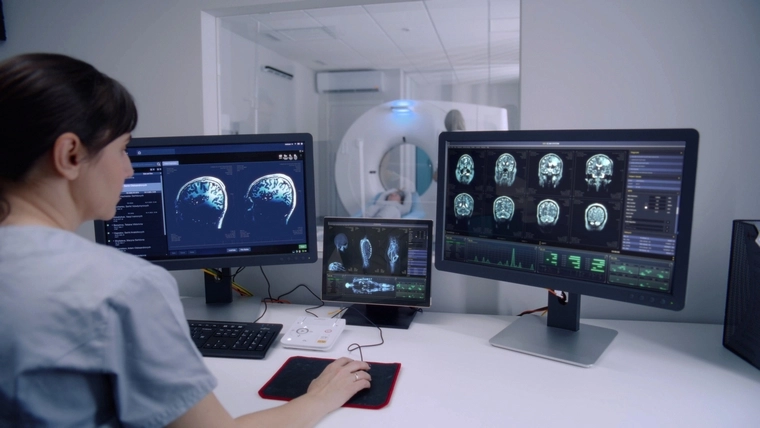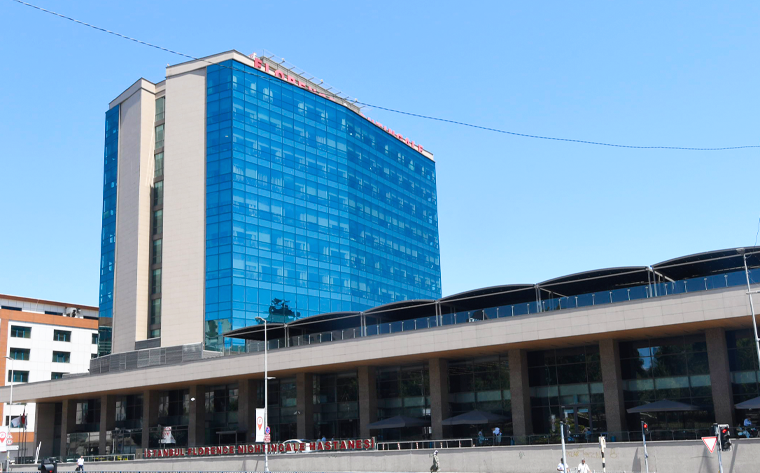
What is an Interventional Radiology Center? What are the Diseases Treated?
Interventional Radiology Center is a branch of medicine where radiologists diagnose and treat various diseases using minimally invasive techniques. In these centers, treatment methods that are alternatives to surgical interventions are applied with interventions guided by imaging methods (x-ray, ultrasound, MR, CT). It plays a major role in the treatment of many diseases, especially vascular occlusions, tumors, cancer, and liver diseases. Among the greatest advantages of interventional radiology are that it carries fewer risks than open surgery, the patient recovers more quickly, and the hospital stay is shorter.
About Interventional Radiology Center
The Interventional Radiology Center represents one of the most innovative areas of modern medicine with its advanced technological devices and expert staff. In these centers, diseases are diagnosed and treatment plans are made using high-resolution imaging devices. At the same time, a sterile environment and state-of-the-art equipment are used to successfully perform interventional procedures. In these centers, which adopt a patient-centered approach, patients' treatment processes progress more comfortably and quickly thanks to minimally invasive techniques.
Who are the Specialists in the Interventional Radiology Center and What Are Their Duties?
The specialists working at the Interventional Radiology Center are physicians who have received radiology training and specialize in interventional radiology. These specialists have in-depth knowledge of advanced imaging techniques and minimally invasive treatment methods. Their duties include evaluating patients' imaging results, determining the appropriate treatment method, and performing interventional procedures. In addition, the nurses and technical staff at the center are also responsible for ensuring that the procedures proceed smoothly.
What tests and procedures are performed in the Interventional Radiology Center?
The examinations and procedures performed at the Interventional Radiology Center include various minimally invasive methods used in the diagnosis and treatment of diseases.
The main procedures performed in these centers are as follows:- Angiography: It is an examination method used to examine the structure and function of blood vessels. Angiography plays an important role in the diagnosis of vascular occlusions, aneurysms and other vascular diseases.
- Biopsy: An invasive procedure performed to obtain samples from suspicious tissues. Biopsies performed under ultrasound, CT or MRI guidance are critical in the diagnosis of diseases such as cancer.
- Tumor Ablation: It is a treatment method used to destroy tumors. Tumors are destroyed with high heat using techniques such as radiofrequency ablation (RFA) and microwave ablation.
- Stent Placement in a Vein: This method is used in the treatment of vascular occlusions and opens the clogged veins. The stent is placed inside the vein and helps blood flow return to normal.
- Embolization: This is a procedure performed to control bleeding or stop the feeding of tumors. Blood flow is stopped by injecting embolic agents into a specific vessel.
- Drainage Procedures: It is a method used to drain fluids or abscesses accumulated in the body. Drainage procedures performed with ultrasound or CT guidance are widely used in the treatment of infections.
- Vertebroplasty and Kyphoplasty: These methods used in the treatment of spinal fractures are performed by injecting bone cement into the broken vertebrae. These procedures relieve patients' pain and increase spinal stability.
- Opening of Blocked Bile Ducts: This method, used for the treatment of blockages in the bile ducts, plays an important role in the treatment of liver and gallbladder diseases. The blockage is relieved by placing a stent in the bile ducts.
These procedures are performed by experienced specialists in the Interventional Radiology Center, usually under local anesthesia. In this way, patients recover faster and carry fewer risks than surgical interventions.
What are the diseases treated at the Interventional Radiology Center?
The Interventional Radiology Center diagnoses and treats many different diseases. Various diseases such as vascular occlusions, peripheral artery diseases, liver tumors, kidney diseases, pulmonary embolism, varicose veins, bile duct obstructions can be treated in these centers. The methods used in the treatment of these diseases are applied with minimally invasive techniques and generally aim to increase the patient's quality of life.
What Tests Are Performed in the Interventional Radiology Center?
The tests used in the Interventional Radiology Center are of great importance in diagnosing the disease and planning treatment. These tests include advanced imaging methods such as computerized tomography (CT), magnetic resonance imaging (MR), ultrasonography, and digital angiography. These tests can also be used to monitor the course of the disease and evaluate the effectiveness of treatment. Each test is carefully selected and applied according to the patient's condition.


